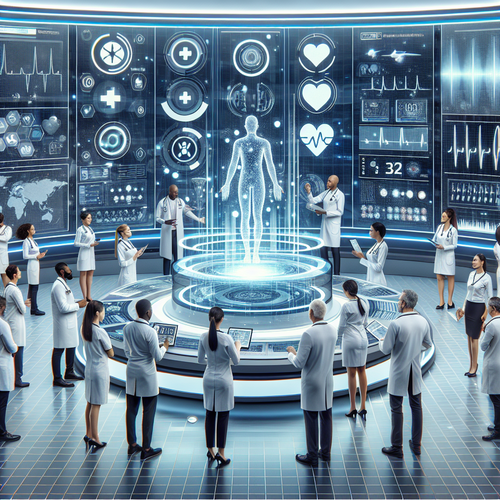
Launch of AI-Powered Healthcare Diagnostics Solution for Remote Monitoring
Launch of AI-Powered Healthcare Diagnostics Solution for Remote Monitoring
In the rapidly evolving field of healthcare, technology plays a crucial role in improving patient outcomes and streamlining operations. The recent launch of an AI-powered healthcare diagnostics solution marks a significant advancement in remote monitoring capabilities, enabling healthcare professionals to provide better care without the constraints of traditional methods.
Prerequisites for Implementation
- Familiarity with AI technologies and their applications in healthcare.
- Integration with existing healthcare management systems.
- Basic understanding of patient privacy laws and telemedicine regulations.
- Collaboration with IT and healthcare teams for seamless implementation.
What is AI-Powered Healthcare Diagnostics?
AI-powered healthcare diagnostics use machine learning algorithms and data analytics to evaluate patient data collected from various sources, such as wearable devices and mobile applications. This technology enhances the accuracy and speed of diagnostics, leading to timely interventions and improved patient outcomes.
Key Features of the Solution
- Remote Monitoring: Physicians can track patient vitals in real-time from any location.
- Predictive Analytics: AI algorithms analyze trends in patient data to predict potential health issues before they arise.
- User-Friendly Interface: Healthcare providers can navigate the platform effortlessly, facilitating ease of use.
- Secure Data Handling: The solution adheres to all data protection regulations, ensuring patient information remains confidential.
- Integration Capabilities: It seamlessly connects with existing electronic health record systems, making data management more efficient.
Benefits of AI in Remote Healthcare
The introduction of AI in healthcare diagnostics provides numerous advantages, including:
- Enhanced Patient Care: Continuous monitoring leads to timely interventions, significantly improving patient health.
- Cost Efficiency: Reduces the need for hospital visits, lowering healthcare costs for both patients and providers.
- Greater Accessibility: Patients in remote areas can receive the same quality of care as those in urban environments.
- Data-Driven Decisions: Healthcare providers can rely on accurate data analyses to make informed decisions regarding treatment plans.
Step-by-Step Guide to Implementation
Step 1: Assess Needs
Identify specific healthcare challenges your organization seeks to address with the AI diagnostics solution. Involve various stakeholders to gather comprehensive insights.
Step 2: Select the Right Platform
Choose a solution that aligns with your organizational needs. Consider factors such as scalability, customization options, and vendor support.
Step 3: Engage IT Teams
Involve IT professionals early in the process for integration with existing systems and to ensure compliance with data security standards.
Step 4: Train Healthcare Staff
Provide training sessions for healthcare providers who will be using the system. A thorough understanding will enhance usage and patient care.
Step 5: Launch Pilot Program
Before full implementation, conduct a pilot program to evaluate the system’s performance and gather feedback from users.
Step 6: Full-Scale Implementation
After refining the system based on pilot feedback, proceed with the full rollout across your healthcare facilities.
Troubleshooting and Support
During implementation, challenges may arise. Ensure robust technical support is available, including:
- 24/7 customer service for immediate assistance.
- Regular software updates to fix bugs and improve functionalities.
- Comprehensive user manuals and resources.
Conclusion
The launch of the AI-powered healthcare diagnostics solution for remote monitoring represents a transformative step in patient care. By taking advantage of this technology, healthcare providers can enhance patient outcomes, increase operational efficiency, and ensure a higher quality of healthcare delivery. As we progress into a digital health era, integration of AI technologies will become essential in adapting to the future needs of healthcare.
Summary Checklist
- Identify organizational healthcare needs.
- Select the appropriate AI diagnostics platform.
- Engage IT teams for seamless integration.
- Train staff on the new system.
- Conduct a pilot program before full implementation.
- Provide ongoing support and training for users.
For more insights on healthcare technological advancements, explore our article on AI-Driven Cybersecurity Threat-Detection Platform.














